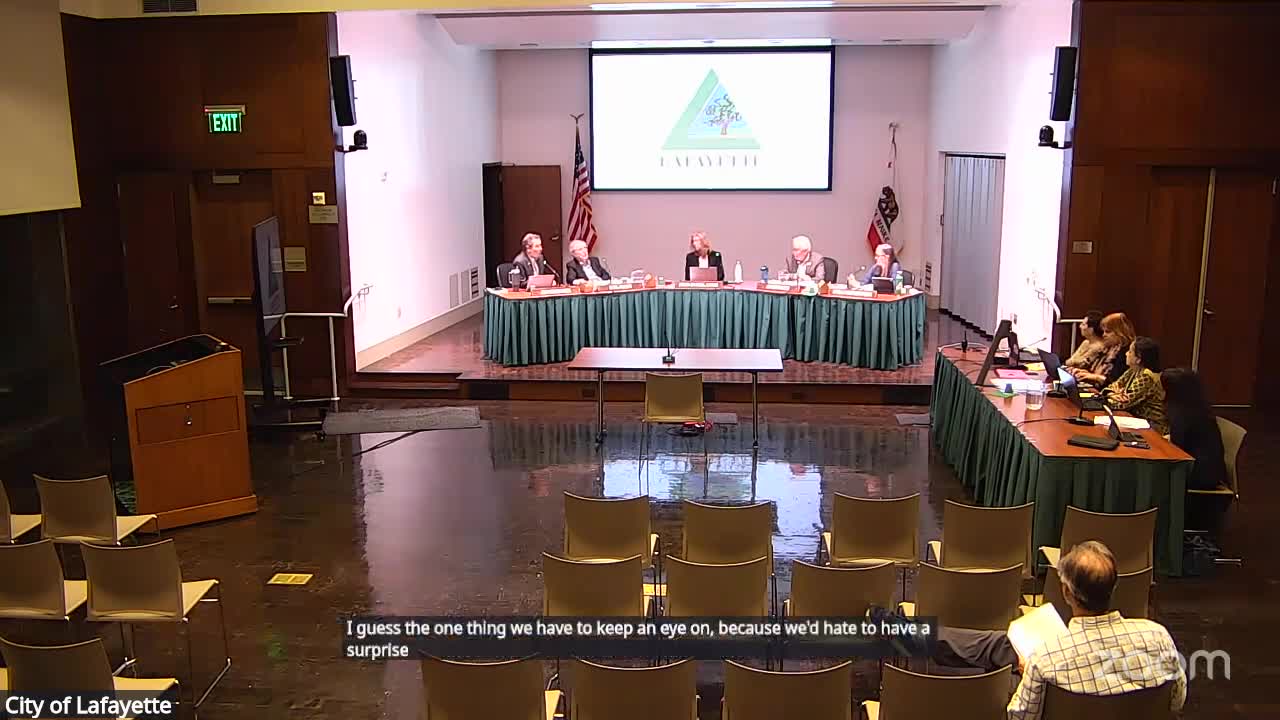MTC to Define Contra Costa's Transit Zones Amid Ongoing Bill Ambiguity
September 09, 2025 | Lafayette, Contra Costa County, California
This article was created by AI summarizing key points discussed. AI makes mistakes, so for full details and context, please refer to the video of the full meeting. Please report any errors so we can fix them. Report an error »

In a recent Lafayette City Council meeting, discussions took a deep dive into the complexities of transportation planning and its implications for the community. Council members gathered under the bright lights of city hall, where the air buzzed with anticipation over critical issues affecting local transit.
One of the focal points of the meeting was the ambiguity surrounding a new bill related to transportation-oriented development (TOD). A council member expressed concerns about the lack of clarity in the bill, particularly regarding whether Richmond's Amtrak and BART stations could be counted together in transit planning. This uncertainty has left local leaders feeling somewhat "stuck," as they navigate the intricate web of definitions and regulations that govern transportation in the region.
The Metropolitan Transportation Commission (MTC) was highlighted as a key player in this process, tasked with creating a map of designated TOD stops and zones. The council member noted that the effectiveness of the bill hinges on the MTC's forthcoming mapping, which will categorize transit areas by tier. "I guess I'll believe it when I see the map," they remarked, reflecting a sense of skepticism about whether Contra Costa County will be recognized as an urban transit area.
As the meeting progressed, the council members eagerly awaited updates from the MTC, hoping for clarity that could shape the future of transit development in Lafayette and beyond. The discussions underscored the importance of collaboration and communication among various planning organizations, as local leaders strive to ensure that their community's transit needs are met effectively.
With the future of transportation planning hanging in the balance, Lafayette's city council remains committed to advocating for clear definitions and actionable plans that will benefit residents and enhance connectivity throughout the region. The anticipation of the MTC's mapping efforts looms large, promising to be a pivotal moment for the city’s transit landscape.
One of the focal points of the meeting was the ambiguity surrounding a new bill related to transportation-oriented development (TOD). A council member expressed concerns about the lack of clarity in the bill, particularly regarding whether Richmond's Amtrak and BART stations could be counted together in transit planning. This uncertainty has left local leaders feeling somewhat "stuck," as they navigate the intricate web of definitions and regulations that govern transportation in the region.
The Metropolitan Transportation Commission (MTC) was highlighted as a key player in this process, tasked with creating a map of designated TOD stops and zones. The council member noted that the effectiveness of the bill hinges on the MTC's forthcoming mapping, which will categorize transit areas by tier. "I guess I'll believe it when I see the map," they remarked, reflecting a sense of skepticism about whether Contra Costa County will be recognized as an urban transit area.
As the meeting progressed, the council members eagerly awaited updates from the MTC, hoping for clarity that could shape the future of transit development in Lafayette and beyond. The discussions underscored the importance of collaboration and communication among various planning organizations, as local leaders strive to ensure that their community's transit needs are met effectively.
With the future of transportation planning hanging in the balance, Lafayette's city council remains committed to advocating for clear definitions and actionable plans that will benefit residents and enhance connectivity throughout the region. The anticipation of the MTC's mapping efforts looms large, promising to be a pivotal moment for the city’s transit landscape.
View full meeting
This article is based on a recent meeting—watch the full video and explore the complete transcript for deeper insights into the discussion.
View full meeting
